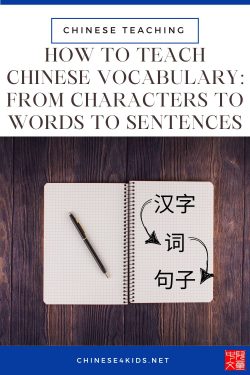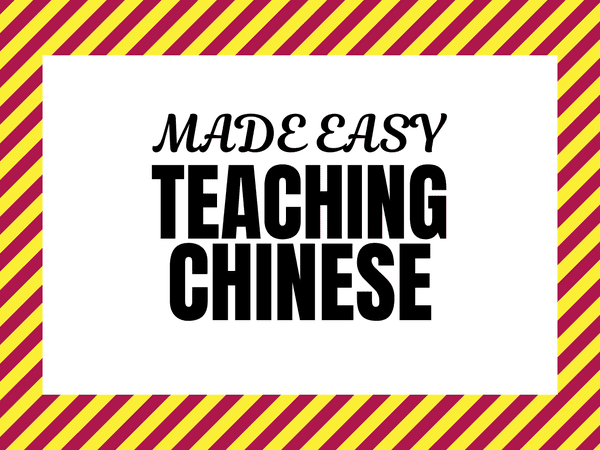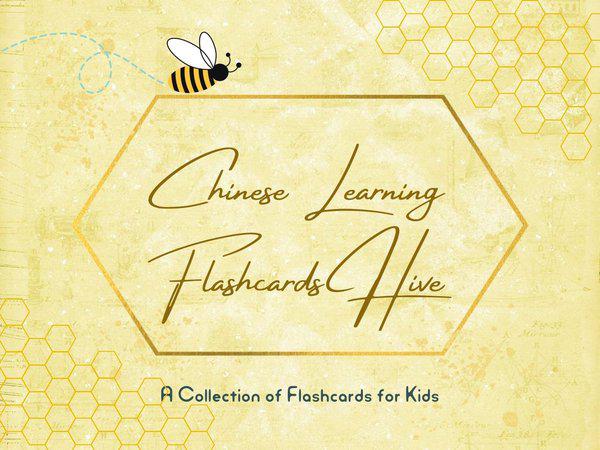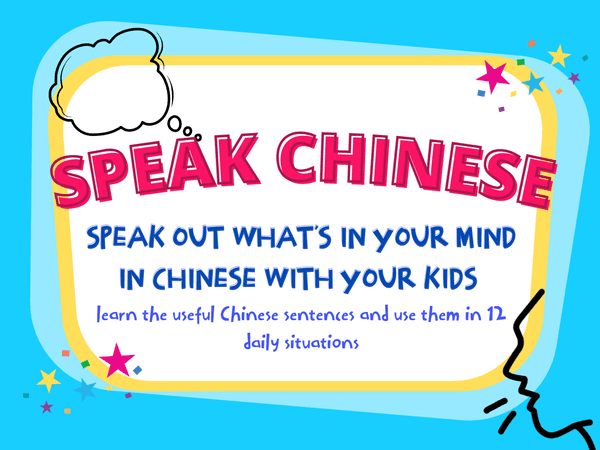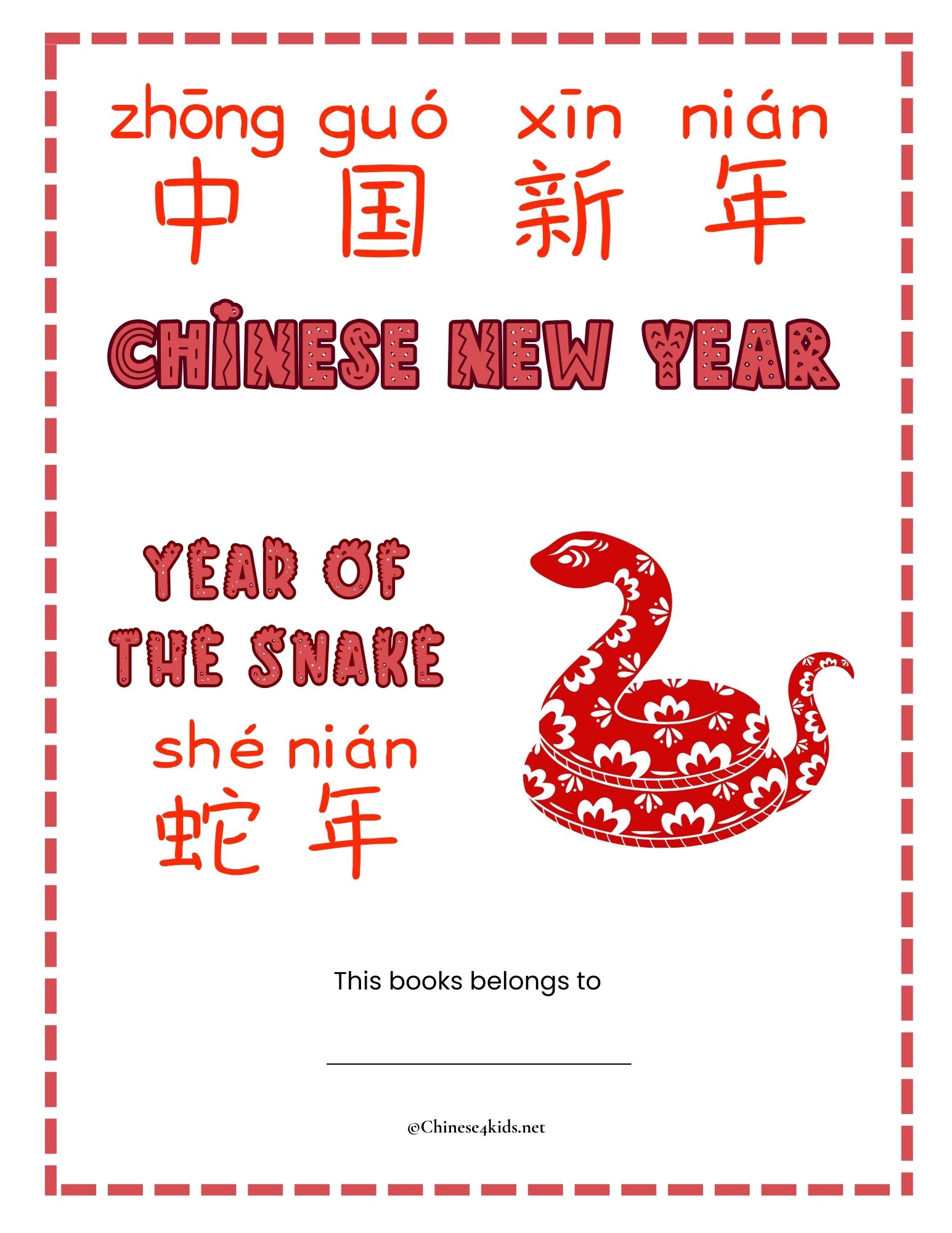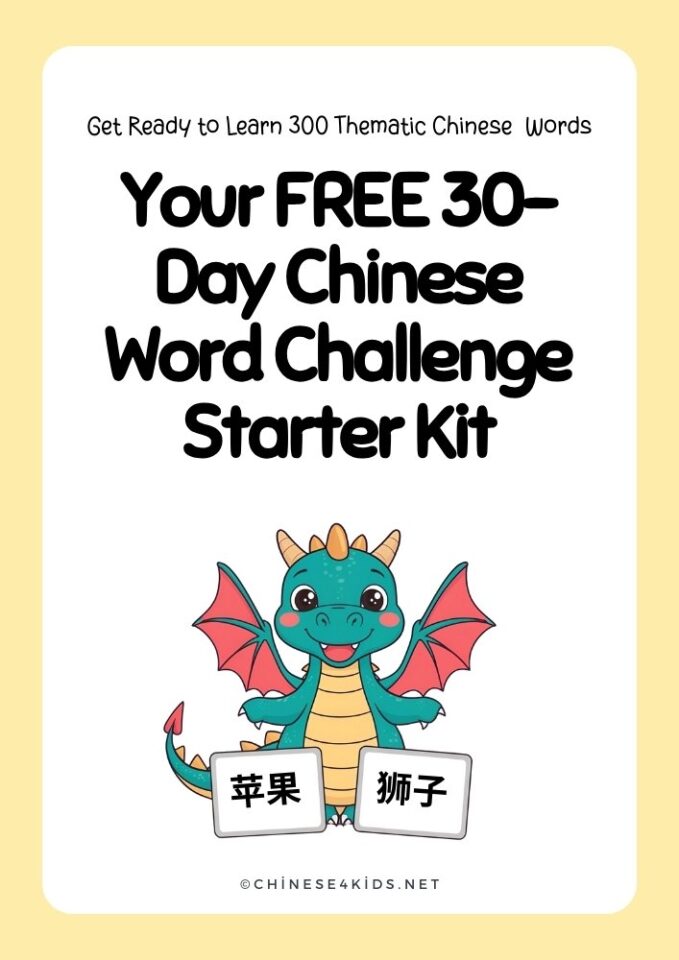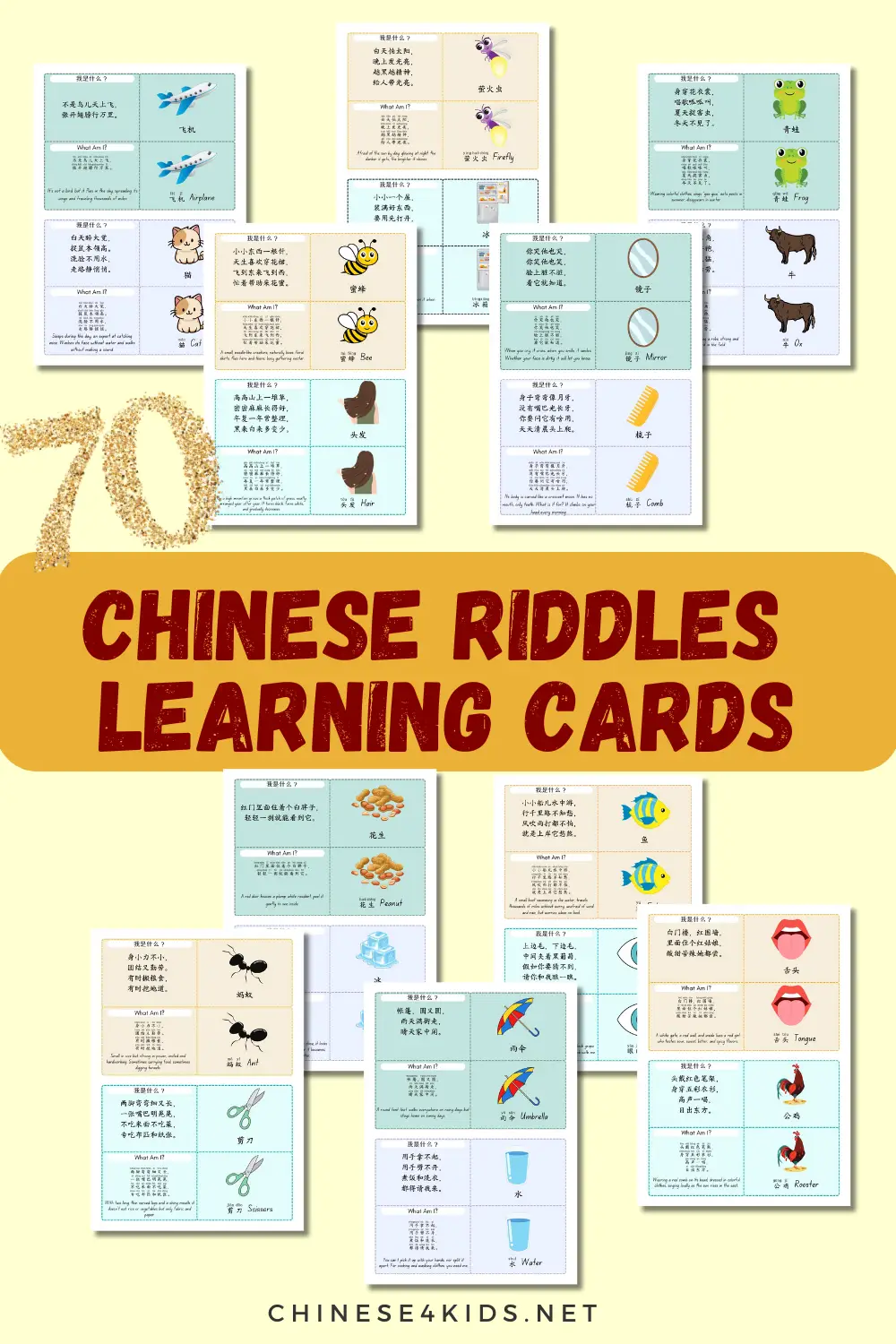
Home » Teach Mandarin Chinese to Kids » How to Teach Chinese Vocabulary: From Characters to Words to Sentences
How to Teach Chinese Vocabulary: From Characters to Words to Sentences

Learning Mandarin Chinese might seem like climbing a mountain— don’t worry, once you get the hang of it, teaching Chinese vocabulary can be a fun, creative process, especially for kids. Whether you’re a parent, teacher, or just helping out a young learner, I’m going to break down how to approach it from the ground up, starting with the very basics.
Why Learning Chinese Vocabulary is Key to Mastering Mandarin
Before we start with the how, let’s talk about the why. For kids learning Mandarin as a foreign language, building a solid vocabulary is a game-changer. You can’t get very far without knowing the basic building blocks of the language.
Chinese is different from languages like English or Spanish because it doesn’t use an alphabet. Instead, it relies on characters—these amazing little symbols that represent concepts, sounds, or objects. Learning to recognize and understand characters is the foundation of learning Mandarin. Without them, it’s impossible to form words, let alone sentences!
But here’s the thing: once you understand how characters fit together, Mandarin starts making sense, like pieces of a puzzle. And who doesn’t love a good puzzle?
Want to join a free 5-Day Chinese Vocabulary Challenge which starts on Oct 14 and ends on Oct 18?
Chinese Characters: The Basic Building Blocks
Think of Chinese characters as the Lego blocks of Mandarin. Each character holds its own meaning, kind of like a letter, but with way more depth. Every time you learn a new character, you’re essentially unlocking a new idea or concept.
Let’s take a few examples of simple, easy-to-learn pictographic characters:
– 日 (rì) = “sun” or “day”
– 月 (yuè) = “moon” or “month”
– 山 (shān) = “mountain”
Fun, right? But it doesn’t stop there! Once you know these characters, you’re ready to start combining them, and that’s where things get really cool.
Tips for Teaching Kids Chinese Vocabulary – Characters
Make it visual!
Chinese characters often look like the things they represent. For example, 山 (shān) looks like three peaks of a mountain. Have kids draw the characters while you explain their meanings. It makes learning so much more interactive!
Tell stories!
Create little stories around characters. For instance, you can tell a story about how the sun (日) rises behind the mountains (山) in the morning.
Use mnemonics to help kids remember complex characters.
For example, the character for home (家) includes a roof (宀) and a pig (豕) underneath—because in ancient China, homes often had pigs inside them! Strange but memorable!
From Characters to Words: Let’s Connect the Dots
Now, the fun part—combining characters! In Mandarin, many words are formed by joining two or more characters together. It’s like pairing those Lego blocks to create a structure. This step is key to expanding vocabulary.
Let’s see how it works:
火 (huǒ) = “fire”
山 (shān) = “mountain”
Put them together and voilà: 火山(huǒshān) = “volcano.” Now, instead of two separate ideas (fire and mountain), you’ve created a whole new concept!
Here’s another one:
手 (shǒu) = “hand”
机 (jī) = “machine”
Together, they form 手机 (shǒujī), which means “mobile phone” (literally, “hand machine”). Pretty neat, right?
Quick Tip for Teaching Chinese Words
Encourage kids to break down words into their individual characters and guess the meaning. This method helps them remember words better and gives them a sense of accomplishment when they figure it out!
From Words to Chinese Sentences: Let’s Put It All Together
Once kids start recognizing some words, they can move on to forming simple sentences. The cool thing about Mandarin grammar is that it’s usually pretty straightforward compared to other languages. The basic structure is the same as in English:
Subject + Verb + Object (SVO)
For example:
我 (wǒ) = “I”
吃 (chī) = “eat”
苹果 (píngguǒ) = “apple”
Now you can create a full sentence:
我吃苹果。(Wǒ chī píngguǒ.)
“I eat apples.”
Just like that, you’ve got a sentence! Once kids get comfortable with these basics, they can start playing around with more elements, like time and location.
Making Sentences More Fun
Want to add some flair to that sentence? Let’s include a time element:
今天 (jīntiān) = “today”
Now the sentence becomes:
今天我吃苹果。(Jīntiān wǒ chī píngguǒ.)
“Today, I eat apples.”
Or add a location:
在学校 (zài xuéxiào) = “at school”
今天我在学校吃苹果。(Jīntiān wǒ zài xuéxiào chī píngguǒ.)
“Today, I eat apples at school.”
Boom! That’s how you can build sentences step by step, adding in new vocabulary along the way.
Pro Tips for Teaching Chinese Vocabulary to Kids
Let’s wrap things up with some practical tips for making Chinese vocabulary learning smooth, fun, and exciting for kids:
1. Start with familiar words.
Use vocabulary kids are already interested in, like animals, food, or toys. For example:
猫 (māo) = “cat”
狗 (gǒu) = “dog”
冰淇淋 (bīngqílín) = “ice cream” (super popular word!)
2. Use repetition.
Repeating characters and words in different contexts helps the learning stick. Flashcards, daily practice, or even simple conversations at home can do wonders.
3.Play games!
Turn learning into a game with memory cards, matching games, or apps like HelloChinese or Pleco. Kids love it when learning feels like playtime!
4. Keep sentences simple.
Don’t overwhelm kids with long, complicated sentences. Start small and encourage them to play around with different word combinations.
5. Encourage creativity.
Let kids create their own sentences with the words they’ve learned, even if they sound funny. The more they experiment, the more comfortable they’ll get with the language.
Final Thoughts: Enjoy the Journey!
Learning Chinese vocabulary doesn’t have to be a daunting task. By focusing on the basics—starting with characters, then moving on to words, and finally sentences—you can guide kids through the process one step at a time.
And remember, it’s all about making it fun. When kids see learning as an adventure rather than a chore, they’ll be much more engaged and eager to keep going.
So whether you’re teaching your own child, tutoring a group of students, or learning alongside them, enjoy the journey! Chinese is a beautiful language, and with the right approach, anyone can master it—one character, one word, and one sentence at a time.
Happy learning!
If you like this post, share it
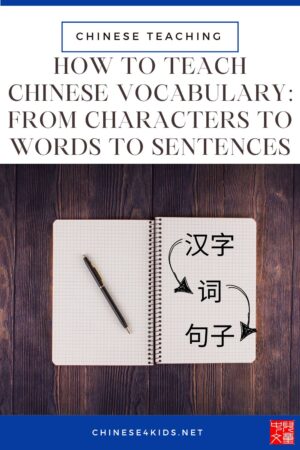
You May Also Like These Resources:
- A Brief Introduction to Chinese Characters
- Charting Through Symbols: Exploring Chinese Pictographic Characters
- Strategies of Teaching| Learning Chinese High Frequency Characters, Just Like Teaching| Learning Sight Words
- 7 Tips on Teaching Kids to Write Chinese Characters
- Top 100 Commonly Used Chinese Characters List
- Top 100 Commonly Used Chinese Character Flash Cards and Audio Pack
- From Characters to Comprehension: Nurturing Chinese Reading Skills in Children
- Unlocking the Magic of Chinese Characters for Kids
- Chinese Vocabulary Made Easy course
You May Also Be Interested:
- Chinese4kids Membership – a portal for busy Chinese teachers and parents
- Chinese learning flashcards Hive – a flashcards library that with regular additions of new quality Chinese learning flashcards
- Chinese learning worksheets collection – Also a part of Chinese4kids membership, this collection is for teachers and parents who want to have access to engaging worksheets and activity sheets created for kids learning Mandarin Chinese as an additional language
- Speak Chinese with Kids Course
- Chinese Vocabulary Made Easy Course
Recent Posts
Join Our Membership
Enroll to A Course
Buy An eBOOK
Our Posts
